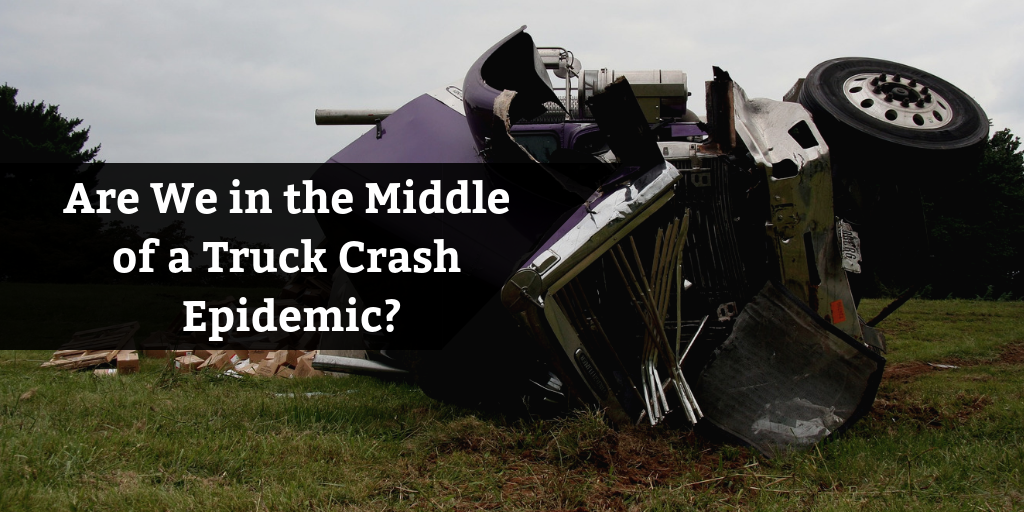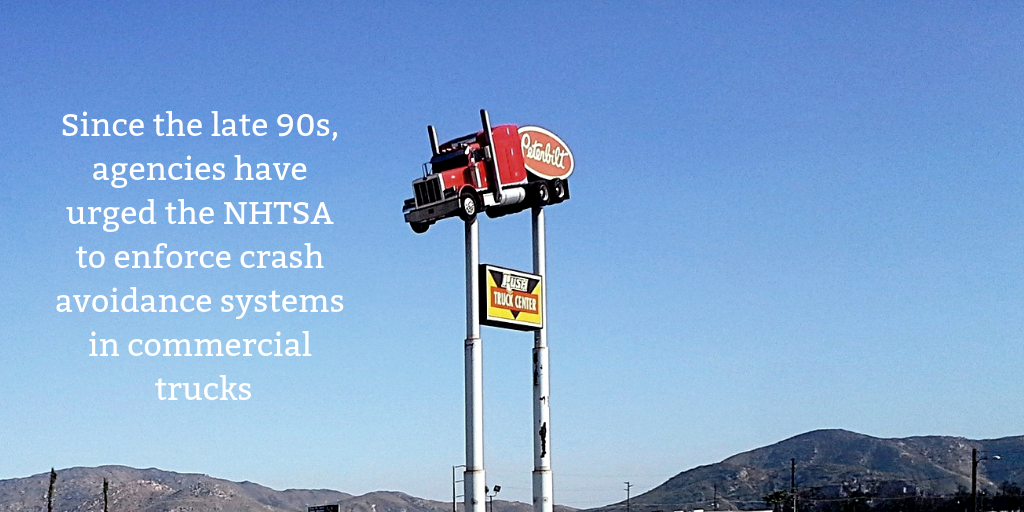
This is part one is a series where we investigate the chain of events that led to the semi truck crash epidemic we currently find ourselves in.
In 2016, more than 4,300 people were killed in semi truck crashes. That’s a 28 percent increase from 2009. Technology is supposed to be making our roads safer, so why do truck accidents continue to climb? The answer is a bit complicated, but it’s clear that our roads should be much safer than they actually are.
The technology exists to radically reduce the amount of deaths caused by truck crashes, so what are we waiting for?
Where’s the Tech?
Collision-avoidance technology is not a new concept. For years now, automakers have worked to make their vehicles as safe as possible. The cars we’re producing today often come with automatic emergency braking, collision warning systems and more.
As a matter of fact, the auto industry has promised that by 2022, these features will be standard on all new passenger vehicles available in the U.S. Surely, the trucking industry will follow suit, right?
Wrong.
Only a small fraction of the semis on the road today are equipped with these now standard collision-avoidance features. While the technology itself is not prohibitively expensive, most trucking companies and drivers seem content to keep the cash they could be spending on safety improvements. With no government regulation in place, who’s to tell them otherwise?
Red Tape and Roadblocks
The National Highway Traffic Safety Administration is the federal regulatory agency that is responsible for mitigating danger on our nation’s roadways. They’re also the agency that would oversee implementing regulations aimed at requiring standard safety features on semis.
Since the late 90s, the National Transportation Safety Board has urged the NHTSA to require crash avoidance and mitigation systems on all heavy trucks.
In over two decades, the NHTSA has failed to even propose a regulation, not to mention putting one into place. The NHTSA revealed in a statement that the agency has been studying the systems since 2013 but doesn’t expect to complete the testing for another 2 years.

Two decades of warnings, over 5 years of research, and yet not a single proposed regulation. Meanwhile, fatal accidents in the US involving big rigs continue to rise.
Is this an example of paralysis by analysis? Many safety advocates feel that way. Yet 20 years later, the administration is still poring over research while failing to make the easy calls necessary to save lives.
Sadly, this is only the first chapter in a story of failings. If we care about the safety of our loved ones and the safety of other motorists on the road, analysis is not enough. We need change, and quick.
Contact Brooks Law Group
If you or a loved one has been injured in an accident involving a commercial truck, you’ve come to the right place. While regulatory agencies are paralyzed by indecision, our attorneys are quick to act.
The attorneys and staff at the Brooks Law Group are dedicated to providing the best client experience possible. They have the experience you need to succeed in your case. Our clients owe us nothing unless we recover money for them. Looking for a free consultation on your case? Call our offices (800-LAW-3030) or visit our website. Don’t let indecision paralyze you; make the right call today.













